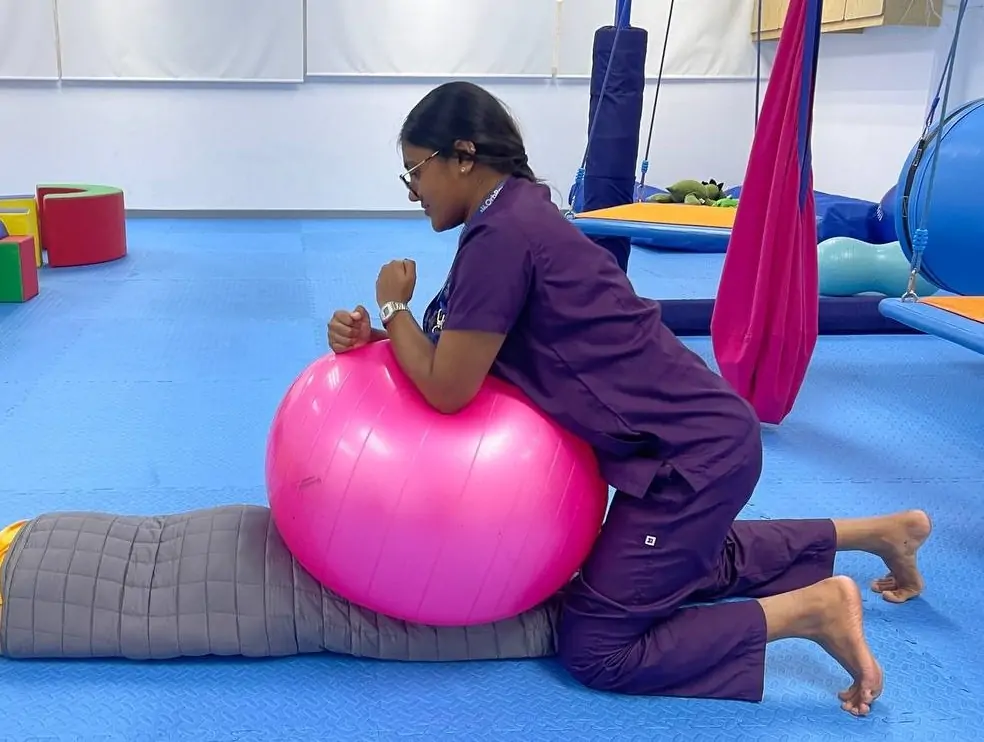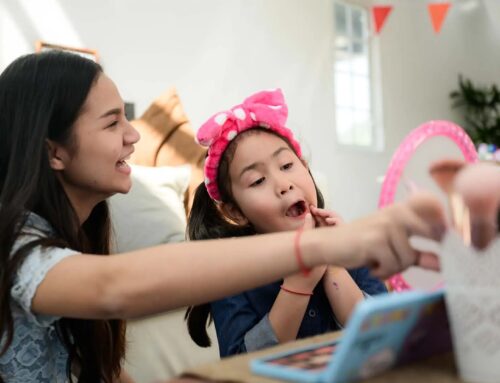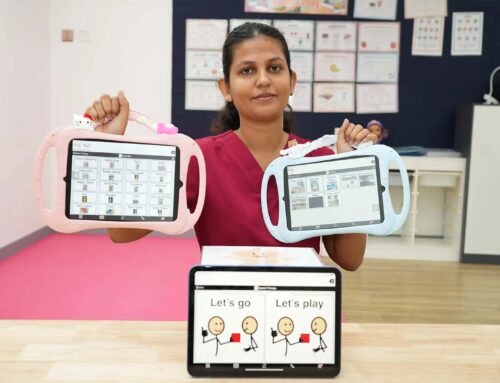When parents hear about “sensory therapy,” terms like Sensory Integration (SI) and Sensory Strategies are often used interchangeably—but they aren’t the same thing. At OrbRom Center, occupational therapists carefully differentiate between structured Sensory Integration Therapy and practical Sensory Strategies used in daily life. Understanding this difference helps parents know what to expect, how progress is measured, and what real, evidence-based support looks like.
Sensory Integration Therapy – the clinical foundation
Sensory Integration Therapy is a structured, evidence-based approach developed by Dr. A. Jean Ayres. It aims to improve the brain’s ability to organize and respond to sensory input—touch, sound, movement, sight, and body awareness.
At OrbRom Center, this approach happens in controlled environments such as sensory rooms equipped with swings, climbing structures, and tactile materials. Sessions are guided by a trained occupational therapist who uses specific sensory challenges to help the brain develop adaptive responses.
Core goals of Sensory Integration Therapy include:
-
Improving attention, emotional regulation, and motor coordination.
-
Helping children tolerate textures, sounds, and movement.
-
Building better sensory processing to support learning and self-care.
SI therapy is not random play. Each activity—swinging, jumping, or crawling—is designed with measurable goals to activate neural pathways and support adaptive behavior. To understand how structured therapy works, see Sensory Integration Therapy: What It Is and How It Works and Benefits of Sensory Rooms.
Sensory Strategies – practical tools for everyday regulation
Sensory Strategies, on the other hand, are short, intentional supports used throughout a child’s day. These include sensory breaks, weighted items, noise-canceling headphones, or specific classroom routines.
They do not change brain processing directly like SI therapy does, but they help manage reactions and behaviors in real time. For example:
-
Giving a child chewy jewelry for oral input.
-
Offering movement breaks before academic tasks.
-
Adjusting lighting or sound levels to reduce overstimulation.
Parents and teachers can easily learn to use sensory strategies at home and school. For more daily applications, explore Proprioceptive Activities and Preventing Sensory Overload at School.
Evidence and expectations
Research shows that Ayres Sensory Integration® (ASI) has the strongest evidence when delivered by trained occupational therapists using standardized methods. Studies confirm improvements in participation, attention, and self-regulation—particularly for children with autism and sensory processing differences.
However, results depend on individual consistency. Families who combine SI therapy with consistent home-based sensory routines see the most progress. Parents can expect gradual improvements—not overnight fixes—in tolerance, flexibility, and daily participation.
At OrbRom, each program includes measurable outcomes and regular reviews to track change over time. Learn more in Occupational Therapy for Autism: Building Independence Through Play and Stepping Into the Sensory Zone.
What parents should expect at OrbRom Center
A typical sensory-based occupational therapy plan includes:
-
Assessment: Identifying the child’s sensory profile through standardized tools and parent interviews.
-
Structured SI sessions: Play-based tasks that challenge sensory systems to adapt and self-regulate.
-
Home and school program: Personalized sensory strategies—tools, routines, and environmental adjustments.
-
Progress reviews: Every few weeks, therapists and parents review sensory goals and adjust interventions.
The goal isn’t just to make a child calmer—it’s to help them participate more fully in life, school, and relationships.






